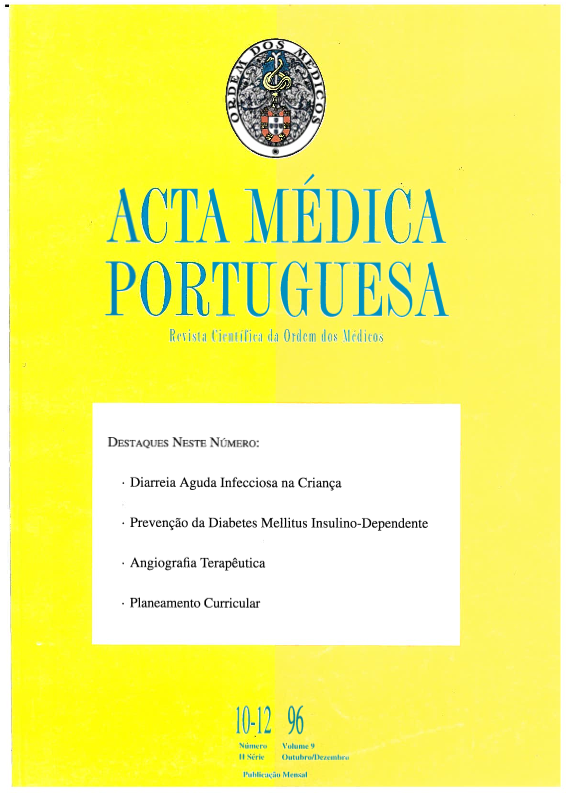The effect of angiography with disodium fluorescein on the hemorheologic parameters of diabetics.
DOI:
https://doi.org/10.20344/amp.2628Abstract
Chorioretinal angiography with fluorescein is an auxiliary method widely used in Ophthalmology which enables us to study the blood/humour and blood/retina/choroid interface. The presence of a strange compound in circulation may interfere with blood flow homeostasis. With the aim of studying fluorescein influence in blood rheology, blood samples were drawn before, immediately after and 30 minutes after fluorescein bolus injection; from 10 patients with diabetes mellitus, with or without retinopathy, blood fluidity (hematocrit, erythrocyte aggregation and whole blood viscosity) and erythrocyte membrane functional properties were determined. After fluorescein injection there was erythrocyte hyperaggregation (37.7%, p = 0.004), was detected, hemoglobin concentration (p = 0.039) and hematocrit (p = 0.013) decrease, and a double time increase of methemoglobin concentration (p < 0.001) the erythrocyte membrane hydrophobic region became more rigid (p = 0.016). All these abnormalities normalized after 30 minutes. In conclusion, fluorescein angiography interferes acutely with the hemorheological parameters of patients with diabetes mellitus, with erythrocyte hyperaggregation which could interfere with the microcirculation of these patients.Downloads
Downloads
How to Cite
Issue
Section
License
All the articles published in the AMP are open access and comply with the requirements of funding agencies or academic institutions. The AMP is governed by the terms of the Creative Commons ‘Attribution – Non-Commercial Use - (CC-BY-NC)’ license, regarding the use by third parties.
It is the author’s responsibility to obtain approval for the reproduction of figures, tables, etc. from other publications.
Upon acceptance of an article for publication, the authors will be asked to complete the ICMJE “Copyright Liability and Copyright Sharing Statement “(http://www.actamedicaportuguesa.com/info/AMP-NormasPublicacao.pdf) and the “Declaration of Potential Conflicts of Interest” (http:// www.icmje.org/conflicts-of-interest). An e-mail will be sent to the corresponding author to acknowledge receipt of the manuscript.
After publication, the authors are authorised to make their articles available in repositories of their institutions of origin, as long as they always mention where they were published and according to the Creative Commons license.









